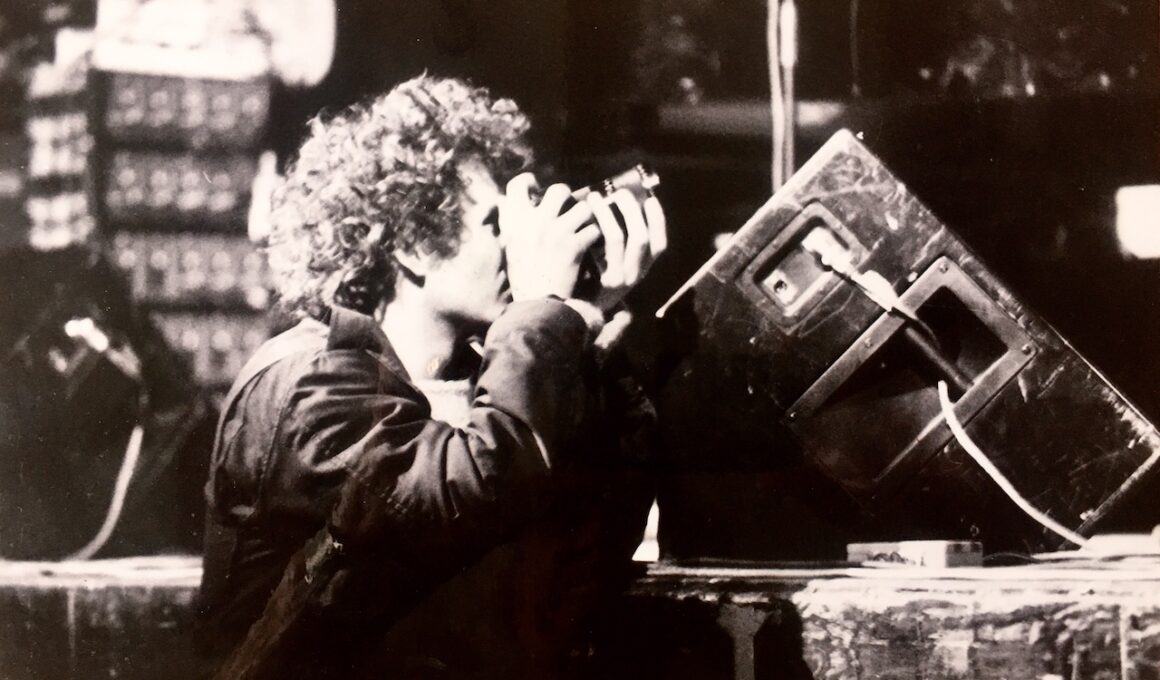DE/ Roland Owsnitzki (1955) ist Fotograf. Seit den Achtzigerjahren fotografiert er auf Konzerten und in Clubs, vor allem in Berlin. Sein liebster Arbeitsplatz ist direkt vor der Bühne: Im dichten Getümmel der sich drängenden Masse gelingen ihm die sichersten und trefflichsten Bilder. Den besonderen Moment zwischen den Musikern einer Gruppe, die charismatische Geste einer Sängerin oder eines Sängers erfasst er dabei ebenso virtuos wie das scheinbar marginale Detail; seine besondere Leidenschaft gilt den Füßen der Musiker, ihrer Schuhbekleidung oder – wenn barfuß – ihrer Zehennagellackfarbe. Tausende von Füßen und musizierenden Fußbesitzern, abertausende von Auftritten und musikalischen Situationen, ungezählte Arten von Klängen, Stilen und Choreografien hat Roland Owsnitzki im Bild festgehalten, von den Rolling Stones im Olympiastadion bis zu all den kleinen, oft klandestin veranstalteten Klubkonzerten, von denen der Pop in Wirklichkeit lebt.
Seine Bilder erscheinen in Tageszeitungen (Berliner Zeitung, taz …) und Magazinen (Rolling Stone, Spex, tip…); fast jeden Abend, jede Nacht ist er unterwegs; wie kein anderer Fotograf, hat er auf diese Weise die letzten drei Jahrzehnte der Berliner Pop- und Subkulturgeschichte dokumentiert. Und er kommt an Orte, die allen anderen verschlossen bleiben: So durfte er als einziger Mensch überhaupt in den mythischen Hallen des Berghain fotografieren.
Text by Jens Balzer
EN/ Roland Owsnitzki is a photographer who has been taking pictures at concerts and in clubs since the 1980s, especially in Berlin. His favourite place to work is right in front of the stage: in the dense hustle and bustle of the crowds. He has a flair for the special moments found in a subtle look shared between the musicians on stage, or the charismatic gesture of a singer, to the slightest detail. His special passion is for the musicians’ feet, their shoes or – if barefoot – the colour of their nail polish. Roland Owsnitzki has captured thousands of feet and musicians, thousands of performances and musical goings-on, countless types of sounds, styles and choreographies, from the Rolling Stones in the Olympiastadion to the small, clandestine club concerts on which pop really lives.
His pictures appear in daily newspapers (Berliner Zeitung, taz…) and magazines (Rolling Stone, Spex, tip…); almost every evening, every night he is on the road; like no other photographer, he has documented the last three decades of Berlin’s pop and subculture history in this way. And he gets to places that remain closed to everyone else: for example, he remains the only person ever allowed to photograph in the mythical halls of Berghain.
